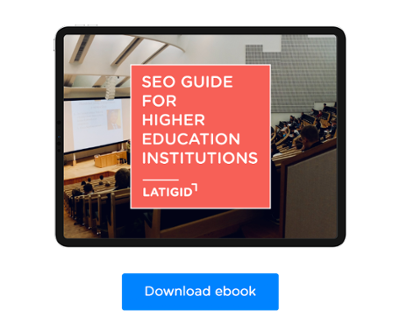
In this era of information overload and fleeting attention spans, the power of User-Centered Design in crafting higher education websites cannot be overstated.
In this article, we embark on a journey to explore the transformative potential of User-Centered Design in the realm of higher education websites.
Definition of User-Centered Design in Higher Education Websites
User-Centered Design (UCD) in the context of higher education websites refers to an approach to design and development that prioritizes the needs, preferences, and behaviors of the website's users. It involves understanding the diverse user groups that interact with the website, such as students, faculty, staff, prospective students, alumni, and other stakeholders, and tailoring the design to meet their specific requirements and goals.
The core principles of User-Centered Design in higher education websites involve gathering extensive user research and feedback to gain insights into user expectations and pain points. This information is then used to inform the design process, ensuring that the website's structure, content, navigation, and functionalities are intuitive, accessible, and relevant to the user base.
User-Centered Design in higher education websites aims to create a positive user experience, enhance engagement, and improve overall satisfaction with the website. By incorporating UCD principles, institutions can create a more inclusive and user-friendly online environment that aligns with the needs and preferences of their target audience. This approach can lead to increased user retention, higher conversion rates, and a stronger sense of community within the institution's online ecosystem.
Related article: University Website Design: 7 essential elements
How User-Centered Design Differs from Traditional Design Approaches
User-Centered Design (UCD) differs from traditional design approaches in several fundamental ways. These differences arise from the central focus on understanding and meeting the needs of users throughout the design process. Here are some key distinctions:
Focus on Users
UCD: User-Centered Design places users at the heart of the design process. It seeks to understand the goals, behaviors, and preferences of users and designs the product or service to align with their needs.
Traditional Design: Traditional design often revolves around the designer's vision or aesthetic preferences. It may not necessarily consider user feedback or conduct in-depth research into user requirements.
Research and Data-Driven
UCD: UCD emphasizes extensive user research, including interviews, surveys, usability testing, and analytics. Data gathered from this research informs design decisions and validates design choices.
Traditional Design: Traditional design may rely more on intuition, personal preferences, or assumptions about what users might want, without necessarily backing these assumptions with concrete data.
Iterative Approach
UCD: UCD is iterative, meaning it involves multiple rounds of feedback and refinement. Designs are continually improved based on user feedback and evolving requirements.
Traditional Design: Traditional design may follow a more linear process, moving from concept to final product without as much user involvement in the development stages.
User Empowerment
UCD: User-Centered Design seeks to empower users by involving them in the design process, considering their feedback, and giving them a sense of ownership over the end product.
Traditional Design: Traditional design often relies on the expertise and decisions of designers, limiting user involvement in the creative process.
Emphasis on Usability
UCD: Usability is a primary focus of User-Centered Design. The goal is to create products or services that are easy to use, intuitive, and efficient for the target users.
Traditional Design: While usability may be considered in traditional design, it may not be as rigorously tested or prioritized throughout the design process.
Flexibility and Adaptability
UCD: UCD acknowledges that user needs and preferences can change over time. It embraces adaptability and welcomes ongoing feedback to accommodate evolving user requirements.
Traditional Design: Traditional design may be more rigid, with limited room for adjustments or changes after the initial design is completed.
Benefits of Implementing User-Centered Design in Higher Education
Implementing User-Centered Design (UCD) in higher education offers numerous benefits that can positively impact the institution, its stakeholders, and the overall learning experience. Some of the key advantages include:
Improved User Experience: UCD prioritizes the needs and preferences of users, resulting in a website and digital platforms that are intuitive, easy to navigate, and user-friendly. This leads to a more positive and enjoyable experience for students, faculty, staff, prospective students, and other stakeholders.
Increased Student Engagement: By understanding the needs and behaviors of students, UCD can create interactive and personalized experiences that promote active participation and engagement with online resources and tools.
Higher Student Retention Rates: A well-designed and user-centric website can foster a sense of belonging and community, leading to increased student satisfaction and, in turn, improved student retention rates.
Enhanced Accessibility and Inclusivity: UCD focuses on creating accessible digital environments for individuals with disabilities or diverse needs, ensuring that everyone can access and benefit from the educational resources and information provided by the institution.
Data-Driven Decision Making: UCD involves gathering user data and feedback, which can inform strategic decisions related to website improvements, content creation, and digital communication.
Increased Efficiency: A user-friendly website reduces the time and effort required for students and staff to find information, complete tasks, and access services, leading to increased efficiency across the institution.
Positive Brand Perception: A well-designed and user-centric website reflects positively on the institution's brand, showcasing a commitment to excellence and a focus on the needs of its community.
Better Recruitment and Admissions: UCD can enhance the admissions process by providing prospective students with a seamless and informative experience, positively influencing their decision to apply and enroll.
Supportive Teaching and Learning Environment: UCD can extend to online learning platforms and tools, making it easier for instructors to deliver engaging content and for students to access educational materials and collaborate effectively.
Enhanced Alumni and Donor Engagement: A user-centric website can strengthen connections with alumni and donors, fostering ongoing engagement and support for the institution's initiatives and programs.
Adaptability to Changing Needs: UCD's iterative approach allows the institution to adapt to evolving user needs and technological advancements, ensuring the website remains relevant and effective over time.
Positive Institutional Culture: Prioritizing user needs can foster a culture of empathy and responsiveness within the institution, leading to better communication and collaboration among stakeholders.
About LATIGID
We are a Higher Education Marketing Agency. With a deep understanding of the latest industry trends and best practices, we are well equipped to help your institution grow.
If you need help creating or redesigning your Institution’s website, check our page to see what we can do for you!
Download our SEO guide and learn how to build a strategy to optimize your Higher Education Institution's website




